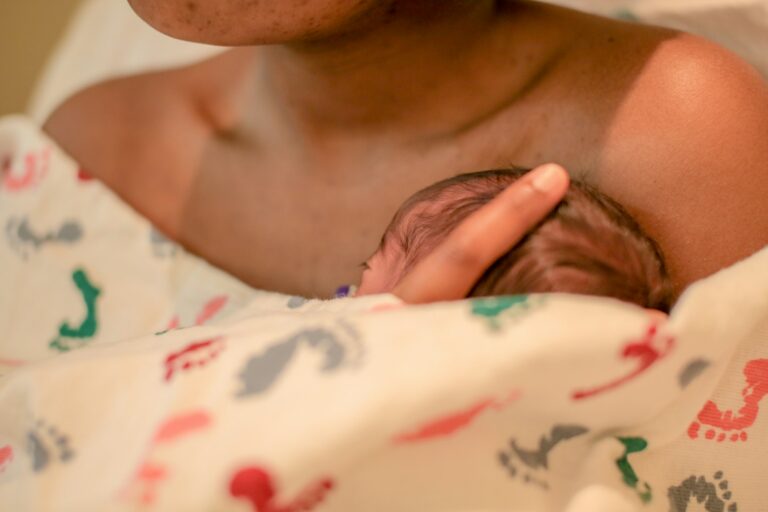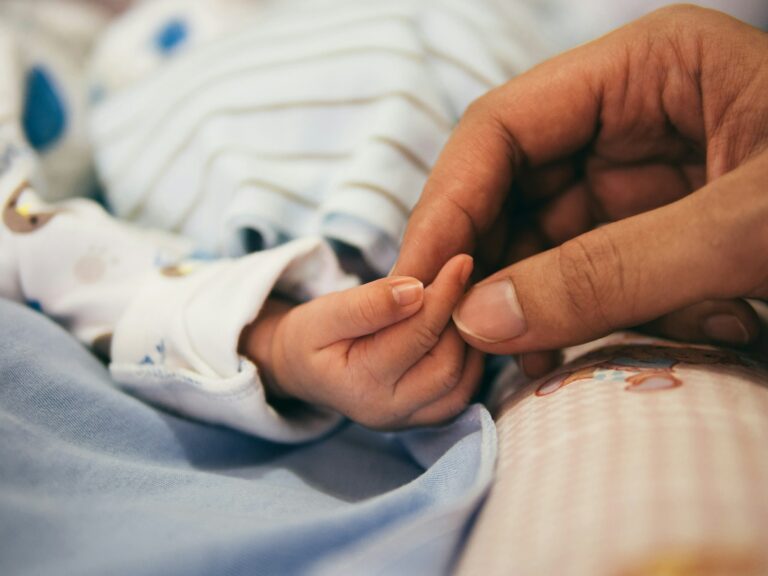Imagine a moment: your child is waiting at the door, school bag ready, shoes haphazardly tied, eyes flickering between you and the person who, not so long ago, shared your evening routine. Co parenting after separation can feel like stepping onto unfamiliar ground—questions surfacing about routines, rights, responsibilities, and above all, your child’s comfort. How do you explain these changes to a young mind, especially when your own emotions feel unsettled? Between discussions about custody, new school pick-up schedules, and the sudden reshaping of what “home” means, parents often find themselves seeking reassurance, both for themselves and their children. Here are pathways to transforming this period of transition into one of stability, trust, and positive growth.
Understanding Co-Parenting After Separation
Co parenting after separation means maintaining shared responsibility for your child’s development, regardless of changes in your romantic status. Medical science reinforces that secure attachments—a sense of safety and continuity—are fundamental building blocks of mental health in children. How you reorganise the co-parenting partnership plays a direct role: resilient, open children grow out of environments where adults manage conflict respectfully and foster predictable routines.
- Co-parenting plan: This legal and practical foundation spells out schedules, medical decisions, school information, and day-to-day logistics. A well-structured plan helps reduce misunderstandings and ensures the child’s needs remain central.
- Types of arrangements: Some parents collaborate closely, sharing medical records and attending parent-teacher meetings together. Others, mindful of high-conflict dynamics, adopt a parallel model—minimal direct communication but firm agreements about the child’s schedule.
- What shifts: Unlike a traditional parenting unit, separated co-parents must reinvent decision-making and emotional presence. The subject moves from “our life” to “the child’s needs”: their medical appointments, sleep arrangements, school activities, and emotional health.
Do you find yourself wondering how your child is processing all these changes? Neuroscientific studies suggest that stability in routines and the assurance of ongoing parental love are vital.
Emotional Wellbeing: Parents And Children In Transition
Let’s address the reality: separation isn’t just a reshuffling of calendars. It’s a reconfiguration of emotional landscapes. Hormonal changes linked to stress (think cortisol spikes) can affect both adults and children, presenting as sleep difficulties, changes in appetite, and even regression in behaviour in younger children.
For Parents: Managing Your Inner World
- Self-regulation: Encountering anger, sadness, or guilt? It’s common for parents to swing between these emotions, especially when legal meetings or disagreements with the ex-partner occur. Techniques such as mindful breathing (Proven in clinical studies to lower heart rate and anxiety), supportive counselling, or even structured self-care routines can keep you grounded.
- Parental boundaries: Defining what topics are open for conversation and which ones should happen via email or a co-parenting app helps reduce triggering exchanges.
For Children: Navigating Uncertainty
- Predictable routines: Neurodevelopmental research highlights that steady bedtimes and familiar rituals give children a sense of security.
- Open conversation: Honest, age-appropriate communication works wonders. Rather than leaving questions unanswered (“Why is daddy not here at breakfast now?”), calmly explain the new arrangements. Children as young as preschoolers sense shifts, sometimes manifesting anxiety through stomach aches or sudden crying spells.
- Loyalty conflicts: Does your child hesitate to express joy after visiting the other parent, fearing disappointment? Facilitate a space where loving both parents is not only accepted but celebrated. Shield them from adult disagreements—let children be children.
Building and Updating the Co-Parenting Plan
Co parenting after separation hinges on a transparent, evolving parenting plan. This document isn’t set in stone—children’s developmental stages, medical requirements, or family circumstances will shift over time.
- Essential elements: Clarifying who is responsible for school pick-ups, vaccination appointments, or decision-making about therapy ensures there’s no “guesswork.”
- Tools for coordination: Digital scheduling platforms, shared medical records, and messaging apps lessen the chance of miscommunication and the stress that arises from missed appointments or forgotten school events.
- Preparing for change: Life isn’t static. Moves, new relationships, or changes in financial situation demand updates in the parenting agreement. Establish a process for regular review—every six to twelve months, or after major events.
Legal and Financial Structures
While parental emotions run deep, the scaffolding of co-parenting rests upon well-defined legal and financial frameworks. Clarity here reduces potential points of contention, freeing up emotional bandwidth to focus on your child’s growth.
- Custody models: The law typically distinguishes between joint (both parents making key decisions) and sole (one parent legally responsible, often in high-conflict or safety risk situations) custody. Courts prioritise “best interest of the child”—a concept underpinned by decades of paediatric research linking positive parental involvement with long-term well-being.
- Financial responsibilities: Child support arrangements aren’t just about covering tuition or meals—they’re medical check-ups, therapy sessions, extracurriculars, birthday celebrations. Ordre, transparency, and comprehensive record-keeping foster cooperation and prevent money from becoming a source of argument.
- Involving new adults: When your child is introduced to new partners or extended family, gradual, respectful integration is beneficial. Paediatricians often advise against sudden shifts or unclear roles, as this can fuel confusion or insecurity.
Communication Strategies: Keeping Dialogue Constructive
Are conversations with your co-parent full of tension? Or do you sometimes feel misunderstood, despite your best intentions?
- Clear, respectful exchanges: Research in family psychology repeatedly shows that solution-oriented communication (avoiding blame, focusing on logistics) shields children from stress.
- Communication channels: If face-to-face doesn’t work, move to email or a co-parenting platform where messages can’t be interrupted by emotion. Regular check-ins help—short, focused, and always about the child’s well-being.
- Conflict resolution: Mediation can transform dialogue. Like a paediatrician guiding a medical plan, a neutral mediator steers conversations, especially when things escalate.
Practical Support: Daily Routines And Adjustments
Co parenting after separation is not only about legalities—it’s the rhythm of everyday life. A forgotten lunchbox, an unexpected fever, or the joy on your child’s face at a school play—these moments demand both coordination and flexibility.
- Synchronising routines: Shared calendars, reminders for medication, consistent household rules between homes—all support emotional security and boost executive function skills in your child.
- Financial clarity: Use tools and regular updates to track expenses and avoid surprises.
- Welcoming change: New family structures bring both opportunities and challenges. Supporting your child through introductions to a new caregiver or half-sibling involves patience, empathy, and practical steps—like one-on-one time or honest discussions about family roles.
Particular Challenges: Distance, Conflict, And Special Needs
Every family’s path through co parenting after separation contains its own set of twists.
- High-conflict dynamics: Parallel parenting, with very little direct communication outside set routines, reduces friction. Written agreements become the “traffic rules” everyone follows.
- Long-distance parenting: Technology closes the gap—frequent video calls, recorded bedtime stories, and digital communication can nurture bonds, even from afar.
- Children with special needs: Multi-disciplinary teams (educators, occupational and speech therapists, paediatricians) rely on frequent, synchronised communication between homes. Document therapy schedules, medication timing, and progress notes to keep everyone updated.
Self-Care And Support Networks For Parents
You may wonder—where is space for my own needs in all this? Medical and psychological research alike underscores that parental wellbeing is strongly linked to children’s emotional security and resilience.
- Emotional self-care: Rest, balanced eating, engagement in hobbies, and, when needed, professional support all contribute to this. Mindfulness-based practices are scientifically shown to reduce anxiety and improve focus.
- Social support: Rely on friends, extended relatives, and parent support circles—either in person or online. Professional guidance from mediators or family therapists is also valuable in complex times.
- Balancing roles: Clear boundaries, proactive planning, and regular communication about roles avoid overload and foster a more harmonious family environment.
The Child’s Experience: Lasting Impact And Growth
Children notice everything—the tone of voice, the length of conversations, the silences. Interpreting their cues and responding to subtle signs (changes in sleep, appetite, school performance) helps catch distress early. Psychologists reiterate that parental conflict, not separation itself, is linked with negative outcomes.
- Bonding across homes: Encourage contact and shared experiences with both parents and extended families. Create rituals around transitions—favourite snacks on pick-up day, a “Goodnight” call, a special book.
- Ongoing adaptation: As children grow, review the co-parenting plan. Celebrate milestones together—even if logistics look different. Regular, honest communication about why changes have occurred helps a child feel safe and valued.
- Explaining family changes: Use concrete, age-appropriate language to clarify the difference between parental love—which is stable—and the end of a romantic relationship.
Key Takeaways
- Co parenting after separation works best when plans are flexible, routines are predictable, and communication remains both respectful and child-focused.
- Open conversations about emotions (while shielding children from conflict) support resilience and healthy development.
- Reliable legal and financial structures provide a framework for cooperation and reduce stress in daily life.
- Parental self-care is vital—it sets the tone for everyone else.
- Professional resources exist. Family counsellors, paediatricians, mediators, and supportive technology can help. Try exploring the application Heloa for personalised guidance, parenting tips and free health checklists for your child.
Questions Parents Ask
How can boundaries be set with a co-parent after separation?
Start by discussing what each parent finds comfortable—focus on the child’s needs and wellbeing as your shared priority. Many parents agree on which topics are fine for calls, which ones to keep to messages, or how to handle pick-up timings. If conversation gets challenging, a neutral mediator can offer direction and structure. Boundaries aren’t about distance from your child—they’re about building peaceful cooperation between adults.
What does effective communication look like in co parenting after separation?
Communication works best when it’s solution-oriented: sharing just what’s needed about the child, using brief messages or co-parenting apps if talking feels hard. Take a pause before replying—this reduces emotional tension. When things get heated, focusing on solutions (not blame) will help lower conflict, creating calmer transitions for your child.
What practical steps support a child’s emotions after separation?
Help your child put their feelings into words. Predictable routines—like bedtime or mealtime together—offer security. Tell your child, again and again, that they are loved equally by both parents, no matter what. Watch for changes—withdrawal, sadness, or anger can mean your child is struggling. If you notice distress, consider advice from a child specialist or counsellor for tailored guidance.
When should you update your co-parenting plan?
Each time there’s a significant change—new job, relocation, or a change in your child’s needs—it’s time to revisit the plan. Try to have brief catch-ups every few months or after life events, ensuring that everyone remains on the same page.
How can new relationships be integrated into the family dynamic after separation?
Introduce new adults gradually, making sure your child has time to adjust. Discuss these changes with your co-parent beforehand and agree on how to present them to your child. Always reassure the child of each parent’s unchanging love and involvement, helping to reduce confusion or insecurity.
What is the impact of conflict between parents on children?
Research highlights that ongoing conflict, more than the fact of separation, affects children’s emotional and behavioural health. Calm, respectful exchanges—shielding your child from arguments and criticism of the other parent—are linked to better outcomes.
What resources can support families adjusting to co parenting after separation?
Turn to family therapists, mediators, and supportive digital tools like the application Heloa for structure, advice, and health questionnaires designed to guide parents at every stage of their child’s development.
Through flexibility, honest conversation, and well-chosen support, co parenting after separation offers a pathway to stability, resilience, and new beginnings—for parents and children alike.









